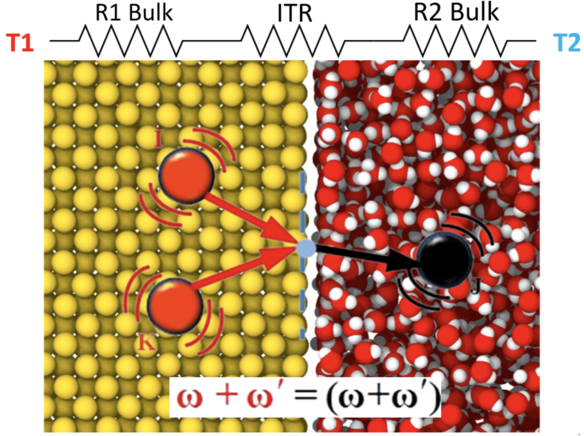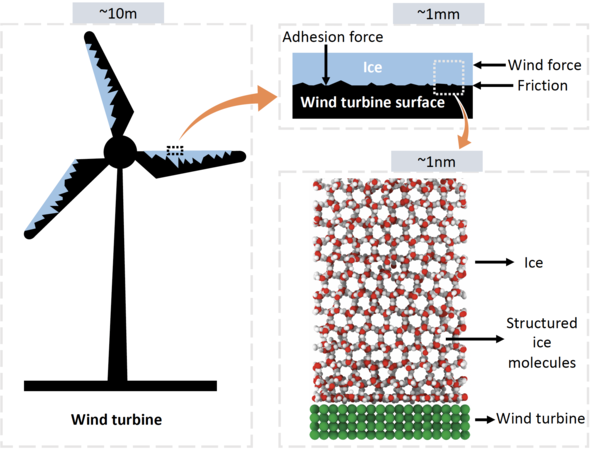Increasing transistor densities and on-chip clockspeeds have yielded increasing thermal loads on modern integrated circuits (ICs), leading to a severe degradation in their performance. These higher thermal loads have spurred interest in two-phase cooling devices, where the objective has been to exploit and optimise the latent heat of vapourisation of the working fluid, thus extracting a significantly greater amount of heat from ICs. The performance of such devices is dictated by how efficiently heat can be transported across the solid/liquid and liquid/vapour interfaces. The interfacial thermal resistance (ITR) strongly influences the mechanisms by which heat is transferred at such interfaces and is therefore key to optimising the performance of these devices. The underlying mechanisms that lead to ITR have yet to be fully understood; existing literature attributes ITR to the the mismatch in the electronic and vibrational spectra of the materials forming the interface, which does not always hold.
The goal of this project is to gain a deeper understanding of the nanoscale physics involved and the role of surface characteristics in manipulating these physical phenomena to minimise ITR.

